Bruce and Kim Scott have modified their Northern Lite for extreme cold weather boondocking. Take us into the frozen north! This is winter truck camping, Upper Peninsula style.

Let us start off by saying that we use all of our truck camper systems in the winter. We use the refrigerator, cook, wash dishes, use, the bathroom, and the shower. We camp just like we do any other time of the year. We can come back after a long day in the cold, get a hot meal, a hot shower and then climb into a nice warm bed. We are able to go out for two weeks in the winter and not fill up the holding tanks in our Northern Lite. This is the story of how we go truck camping, in comfort and style, during the winter.
Interior Mod: Add an Electric Furnace
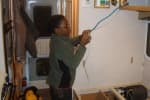 |
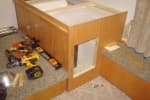 |
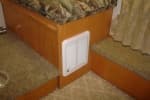 |
My Little Brother (Big Brothers, Big Sisters), Tanaka, and I installed an electric furnace in our camper. When we’re winter camping and we have electric hook-ups, we can run both the electric furnace and/or the propane furnace. When we’re plugged in, the electric heat is our main heat, and the propane is just our backup. In freezing temperatures, whether we have electric hook-ups or not, we always run the propane furnace and water heater to keep things from icing up.
Interior Mod: Basement Thermostat and Fans
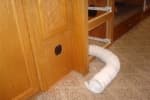 |
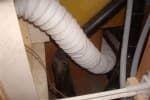 |
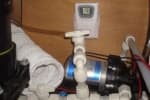 |
The propane furnace is ducted to the basement to keep the water systems from freezing. But when running electric heat we needed to get the warm air into the basement, so I installed a small computer fan and flex ducting below our kitchen pantry. The camper already has a passive cold air return duct and I installed another computer fan there to increase the air flow back to the camper.
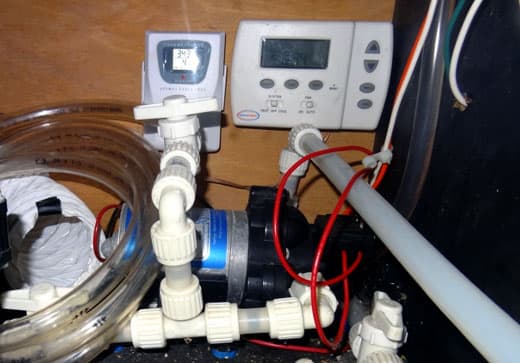
Above: The remote temperature and moisture sensor in the basement is viewed on the weather station (on left). The thermostat (on right) in the basement is set and forget, it takes care of itself.
I installed a thermostat in the water pump area of the basement. The thermostat determines when the fans need to go on and circulate the air in the basement. If the basement temperature gets below the set point on the thermostat, the fans automatically turn on to prevent the tanks from freezing.
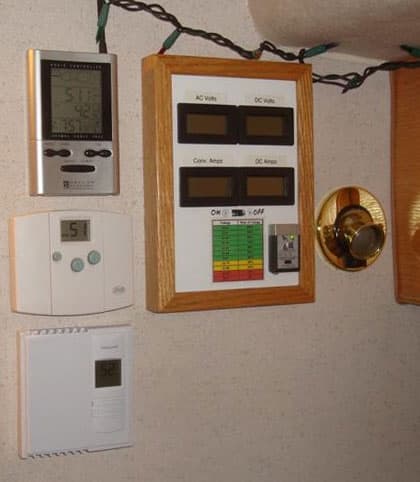
We have a monitor in the camper that tells us the temperature and humidity inside the camper. With the three remote sensors we get the outside, the basement, and the refrigerator temperatures, but that’s a different story. We keep a close eye on those numbers to give us piece of mind that our basement plumbing doesn’t freeze.
If we know it’s going to be really cold outside when we go to bed, we turn the propane furnace on to make sure the basement doesn’t freeze overnight. If it’s not in the single digits, I’m okay with just the electric heat running.
In the above photo the monitors are: 1. Upper left is the weather station (with three remote sensors, outside, basement and refrigerator), 2. Middle left is the propane thermostat, 3. Lower left is the electric thermostat, 4. The four meters on the right show AC and DC volts and AC and DC amps. The small box below the four meters is the charge wizard for our power converter.
Interior Mod: Cabover Fans Running 24/7
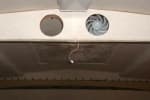 |
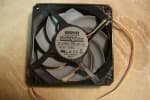 |
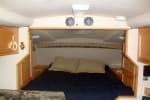 |
Besides the two computer fans that push warm air into the basement, we added two additional computer fans in the bulkhead wall separating the bedroom from the main camper interior. I mounted the fans as high in the camper as I could get them. Of course I contacted Keith Donkin, General Manager at Northern Lite, to give me his input. I showed him the two locations I was thinking about and he said there was nothing in the way of those mounting locations.
The fans are facing forward so they will gently move the heat along the ceiling and follow the curve down in front of the pillows where it was getting cold. During cold weather camping these fans are on all the time. Having even this small amount of moving air helps regulate the temperature and humidity.
At one point we took a thermometer and measured the temperature between the pillows and the front wall with the fans on low, high, and with the fans off. There was a significant difference in temperature under those different conditions. The biggest thing is to keep the warm air moving.
Interior Mod: Overcab Mattress
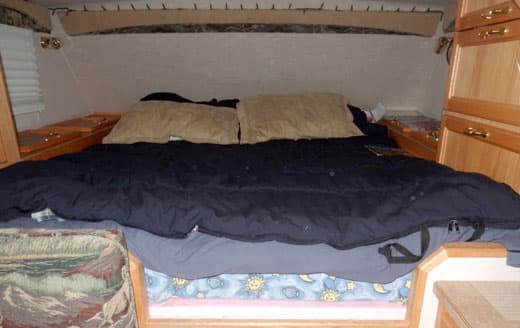
To help keep the overcab warm, we took the mattress out and put in one inch rigid foam on the floor under the mattress. Then we put the mattress back and we added a 12 volt mattress warmer. Because the mattress pad is 12 volt, it’s slow to heat up, but given time it does make a difference, and the mattress is quite cozy.
Interior Mod: Hatches and Skylights
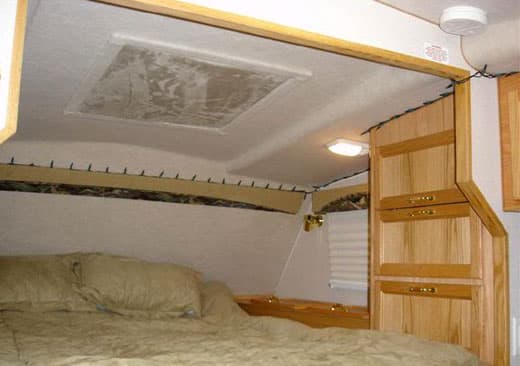
Northern Lite campers have escape hatches above the bed. I made an insulating pillow for the escape hatch out of two-inch foam. This helps keep the cabover warmer and reduces sweating and frost on the hatch.
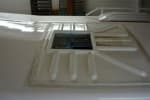 |
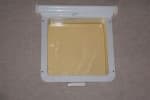 |
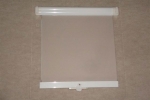 |
We also took off our air conditioner, put in a skylight, and use a vent pillow to insulate that area. We removed the air conditioner because we could not get the camper in our barn with the air conditioner installed. Now we have about a half inch of clearance. It just squeaks into the barn. Given a choice we are not going to leave our toys outside in the weather.
Interior Mods: Carpet and Cubby
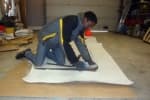 |
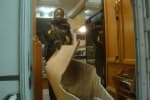 |
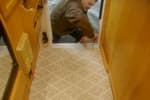 |
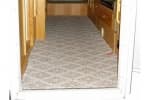 |
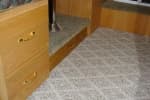 |
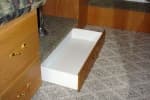 |
Top Row: Our camper came standard with linoleum floors, so we installed carpet for comfort and warmth.
Bottom Row: Under the dinette floor there is a small cubby space. We built a drawer to fit that cubby for shoes and supplies. We tried to make it so that it looks like it came from the factory.
Exterior Mod: Foam insulation and Riser
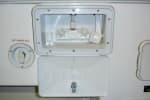 |
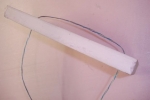 |
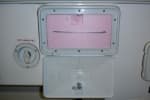 |
We added one-inch rigid foam plugs for extra insulation in the exterior compartment doors of the outside shower, sewer hose and power cord. We didn’t insulate the battery or propane compartments from the outside since they need air to vent out the gases, or from the inside so they can enjoy some of the heat that migrates to them. Warm batteries give off more power than cold ones. And if propane gets too cold, it doesn’t convert from liquid to gas as well either.

We needed a platform to raise the camper so that it will clear the truck cab. This is actually a benefit because we used rigid foam that gives us an additional three inches of insulation under my basement floor.
Exterior Mod: Fifty Foot Power Cords and Camping Chairs
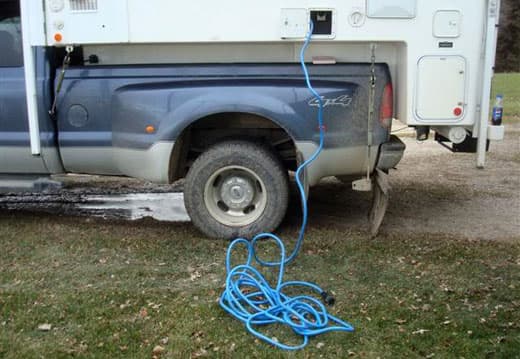
A truck camper friend of ours in Ohio had a fifty foot RV power cord sitting in his garage. He was very nice and offered to trade our twenty-five foot cord for his fifty foot cord. In the winter, it can be hard to get close to the power pedestals in some of the campgrounds because the snow can be deep. In these situations and others, the fifty foot power cord comes in handy.
Our camping chairs are rocking chairs from Camping World. The benefit for winter camping is they have a top and bottom layer of material with padding in between. We like to say they’re insulated. The campfire keeps our front side warm and the chair helps keep our back side warmer than just a single layer chair.
Boondocking Tip: Add More Battery Power
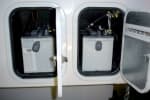 |
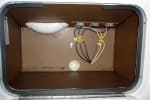 |
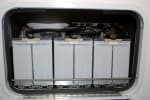 |
We have three batteries in our Northern Lite. When we first got the camper, it had two batteries in separate compartments. We combined the battery compartments and added a third battery. The additional battery power is definitely a benefit while we’re out winter camping.
We worked with Keith at Northern Lite to make sure the compartment mods and additional battery weight would work. I always recommend talking to your dealer and/or manufacturer about any modifications.
Boondocking Tip: Always Take a Generator
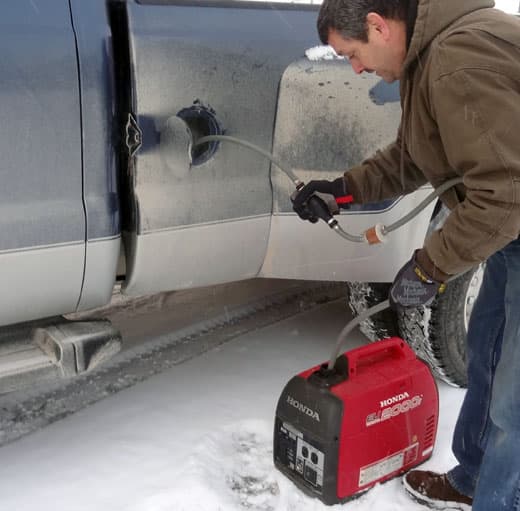
We pretty much don’t go anywhere, in any season, without our Honda eu2000i portable generator. Even if we’re just going to a campground that has electric hook-ups, we take it with us.
Campgrounds can lose power, too. We went to a campground on this last trip and they warned us that they had lost power earlier that day. We haven’t had an issue yet, but it’s best to have a plan B just in case. In the winter, power is not an option, you have to have it one way or another to keep yourself warm and your water from freezing.
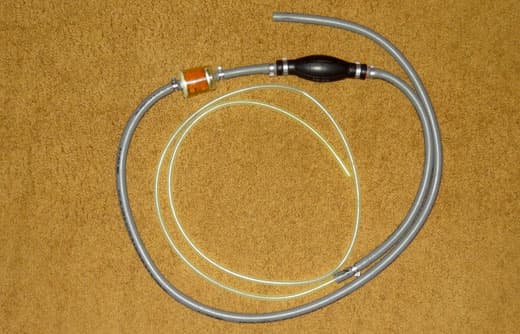
Instead of carrying an extra gas can for the Honda eu2000i, we carry a siphon and just take gas out of the truck’s fuel tank. Of course this only works with gas trucks.
Boondocking Tip: Never Run Out of Propane
Our camper has two twenty pound propane tanks. On some past trips we have also taken a spare tank of propane. For this recent trip, we just did a tank exchange part way through the trip. Whether we need to do this or not depends on how cold it is, how much we are in and out of the camper, how much access we have to electric, and how much we are using the water heater for showers and dishes. This last winter trip was nine days and we used two twenty pound propane tanks. When it’s cold, we use a lot of propane.
Our Northern Lite uses an automatic switch over on the propane regulator, but we only use one tank at a time. We might run out at 2:00am, but this way we know that tank number one is out of propane. If it automatically switches over, we wouldn’t know the first tank was empty unless we remembered to check the levels or until both tanks were empty. When we do empty the first tank we’ll open the second tank and plan our refill for the very near future.
Boondocking Tip: Getting Moisture Out
When you’re cooking in the cold weather, the propane stove puts moisture in the air, as does taking a shower. This past trip we had zero problems with condensation, but it was not as cold as some of our other trips where we have had frost on the interior windows. When that happens, we crack the window under the bed going to the truck and we crack the bathroom vent. This allows the moisture to escape and be replenished with dry outside air.
Go Winter Boondocking!
After each camping trip we come home and talk about the worst problem we experienced, and address it. We’ve gotten pretty much everything covered at this point. This last one was a simple trip that we’ve done many times, so there was really nothing new. We have everything pretty much dialed in for winter camping.
With a little planning and effort, winter truck camping can be a blast. We love it.
